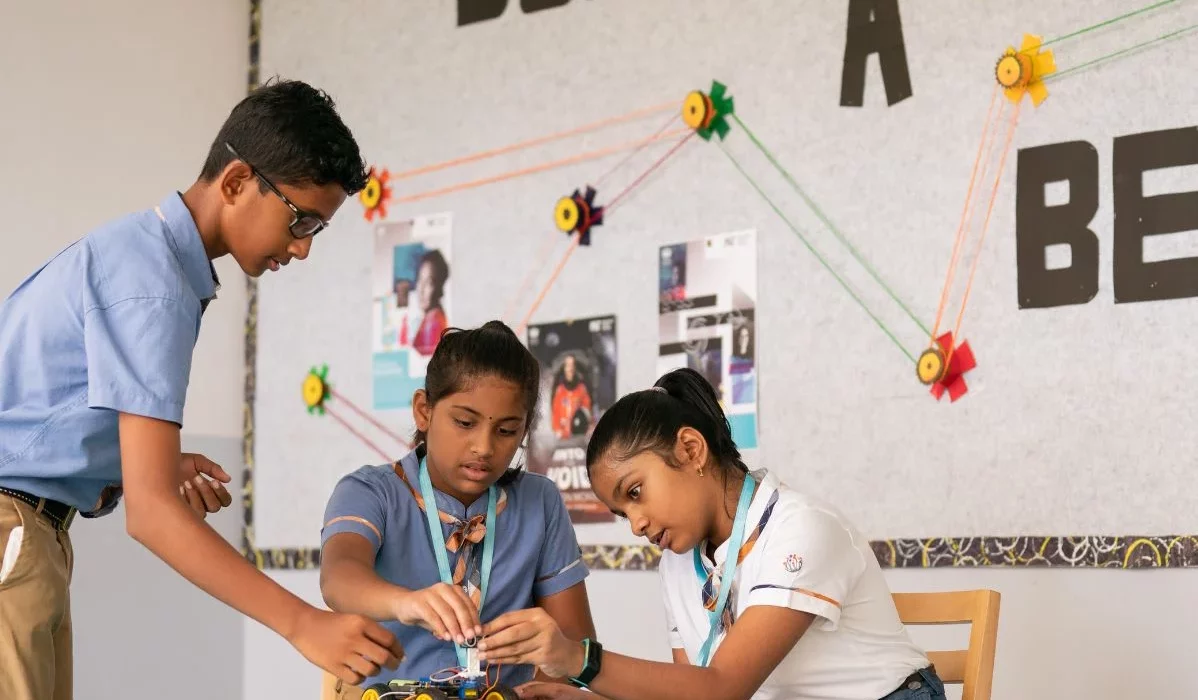How STEAM Education is Shaping the Future of Innovation.

Introduction
In an increasingly complex world driven by technological advancements, traditional education models focused solely on science and mathematics are no longer enough to prepare students for the future. This has led to the rise of STEAM education, a comprehensive approach that combines Science, Technology, Engineering, Arts, and Mathematics. By integrating these disciplines, STEAM education fosters creativity, critical thinking, and innovation, making it a key driver for shaping the future of work and problem-solving in a rapidly evolving global landscape.
The Importance of STEAM Education
STEAM education goes beyond the traditional focus on STEM (Science, Technology, Engineering, Mathematics) by adding the arts, including subjects such as design, visual arts, and humanities. This interdisciplinary approach helps students think holistically, encouraging them to solve problems creatively and view challenges from multiple perspectives.
The inclusion of the arts is particularly crucial because it nurtures creativity and imagination, skills that are vital for innovation. While technical expertise in fields like engineering and technology is important, the ability to think creatively and develop new ideas is equally essential in today’s fast-paced world. STEAM education ensures that students do not just acquire knowledge in isolated subjects but are able to combine them to create innovative solutions.
How STEAM Education Promotes Innovation
One of the key ways in which STEAM education promotes innovation is by encouraging students to engage in hands-on, project-based learning. This approach allows students to tackle real-world challenges and work collaboratively to find solutions, simulating the problem-solving processes used by professionals in fields like technology, design, and engineering. By working on interdisciplinary projects, students learn how to apply theoretical knowledge to practical situations, a skill that is highly valued in the workforce.
For example, students working on a project to design a sustainable energy solution may need to apply knowledge from physics (science), computer programming (technology), engineering principles (engineering), mathematical modeling (mathematics), and even consider design elements (arts) to make the solution both effective and aesthetically pleasing. This kind of cross-disciplinary learning ensures that students develop a well-rounded skill set, preparing them for the dynamic nature of future careers.
Fostering Critical Skills for the Future
STEAM education fosters the development of critical thinking, problem-solving, collaboration, and communication skills—essential competencies for thriving in the future workforce. The focus on real-world problems encourages students to think analytically, ask questions, and develop creative solutions. These skills are transferable across industries and will be indispensable as technological advancements continue to reshape job markets.
Moreover, the emphasis on collaboration in STEAM projects teaches students how to work effectively with others, combining different skills and knowledge areas to achieve a common goal. This mirrors the collaborative environments found in most modern workplaces, where interdisciplinary teams come together to solve complex problems.
Preparing Students for Emerging Careers
As industries evolve and new fields emerge, STEAM education prepares students for careers that do not yet exist. The fast pace of technological change means that the jobs of tomorrow will require skills that blend technical expertise with creativity and critical thinking. For instance, the rise of fields like artificial intelligence, robotics, and sustainable energy solutions demands individuals who can combine scientific and technical knowledge with an understanding of design, ethics, and human needs.
By fostering interdisciplinary thinking, STEAM education equips students with the flexibility to adapt to new technologies and challenges, giving them a competitive edge in a world where careers are constantly evolving. This adaptability ensures that students are prepared for the future, even as the landscape of work continues to change.
Challenges in Implementing STEAM Education
While the benefits of STEAM education are clear, there are challenges in its widespread implementation. Many traditional education systems are structured around rigid, subject-specific curricula that make it difficult to integrate STEAM effectively. Teachers may also lack the training and resources to teach in an interdisciplinary manner, particularly when it comes to blending subjects like the arts with science and technology.
Additionally, there may be resistance to change from educators, administrators, and parents who are more familiar with conventional approaches to education. Overcoming these challenges requires a shift in mindset and a commitment to professional development, as well as investment in resources that support interdisciplinary teaching methods.
The Role of Technology in STEAM Education
Technology plays a central role in STEAM education, enabling students to access information, collaborate remotely, and experiment with new ideas. Digital tools, coding platforms, and simulation software provide students with opportunities to engage in projects that would be difficult or impossible in a traditional classroom setting. Virtual reality, for example, can be used to explore scientific concepts in immersive ways, while 3D printing allows students to create prototypes of their designs.
Furthermore, the internet provides a wealth of resources that can enhance the learning experience, from online tutorials to open-source platforms that allow students to share and refine their projects. By integrating technology into the learning process, STEAM education prepares students to be proficient in digital literacy, a skill that is increasingly important in today’s tech-driven world.
Conclusion
STEAM education is transforming the way we think about learning and innovation. By combining science, technology, engineering, arts, and mathematics, it fosters creativity, critical thinking, and collaboration, preparing students for the challenges and opportunities of the 21st century. As technology continues to advance and new industries emerge, the need for well-rounded individuals who can think across disciplines and solve complex problems will only grow. By embracing STEAM, educators can help students develop the skills they need to drive the innovations of tomorrow and shape a better future.










